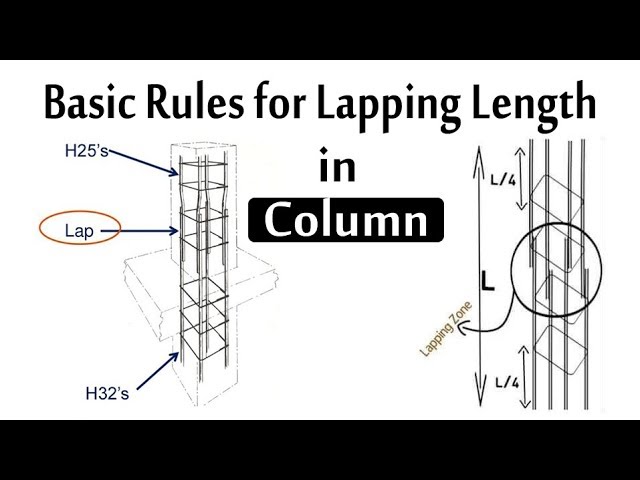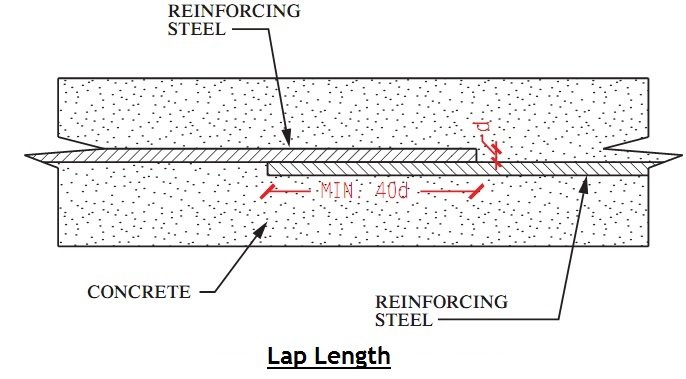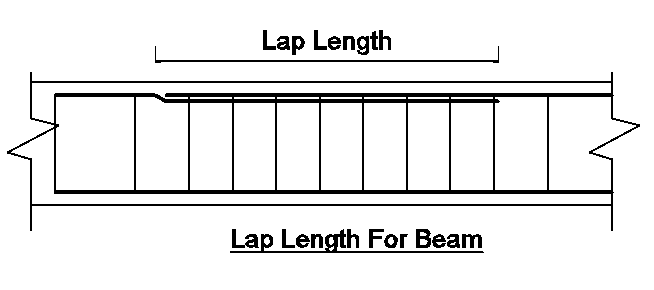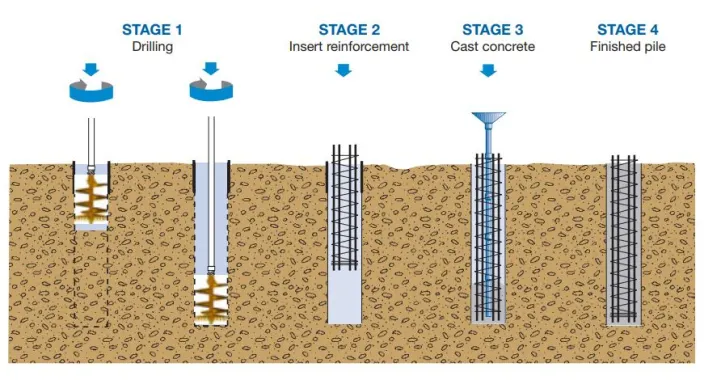Reinforced concrete is widely used in construction due to its strength and durability, and it is essential to ensure that the reinforcing bars in the structure are properly connected and spliced. Lap length is a critical factor in reinforcing bar splicing, and it plays a vital role in the structural integrity of reinforced concrete elements such as beams, columns, and different types of slabs.
The lap length is the amount of overlap between two reinforcing bars that are spliced together to ensure that the load can be transferred effectively from one bar to another. In this article, we will explore what lap length is, why it is important, and how to determine the correct lap length for different types of construction projects.
What is Lap Length?

Lap length is the minimum overlap required between two reinforcing bars or rebars that are spliced together to ensure structural stability and durability. It is required when bars are placed short of their required length, or when the bar diameter has to be changed along the length, as is sometimes done in columns.
The goal of lap length is to effectively transfer axial force from the terminating bar to the connecting bar with the same line of action in the junction. This ensures that the load-carrying capacity of the reinforced concrete structure is maintained. However, the introduction of lap length can also lead to stress concentrations in the surrounding concrete, which can potentially compromise the structural integrity of the building.
To minimize the negative effects of lap length on the structure, proper splicing techniques should be used. Additionally, the lapping locations should be kept away from sections with high flexural or shear stresses. Finally, the locations of splicing at the individual bars of a group, as is typically done in columns, should be staggered to ensure even load distribution and reduce stress concentrations.
The Significance of Lap Length in Reinforced Concrete Design

Lapping is provided when there is a need to extend the length of reinforcing bars that are shorter than the required length for a particular construction project. In the case of the 50-meter high column, no 50-meter-long single reinforcement is available, so multiple shorter bars must be used to achieve the desired height. Lapping is used to securely pass the tension load from one rebar to the next, ensuring that the structure is stable and can carry the expected load.
The overlap between two rebars is necessary to transfer the load effectively from one bar to the next, creating a continuous load path through the structure. This ensures that the structure can withstand the expected load and maintain its strength and durability over time.
The length of the lap required depends on various factors, including the size and type of reinforcing bars, the concrete mix, and the design requirements. As mentioned earlier, proper splicing techniques should be used to ensure that the lapped bars are securely connected, and stress concentrations at the surrounding concrete are minimized.
Calculating Lap Length in Reinforced Concrete: A Step-by-Step Guide

Calculating the lap length for reinforcing bars is an important aspect of reinforced concrete design, as it ensures that the bars are properly spliced and that the structure can carry the required loads. The lap length is calculated based on several factors, including the size and type of the reinforcing bar, the grade of concrete, and the design requirements.
The lap length is typically calculated using the following formula:
L = ld x db / 4 x σst
where L is the lap length, ld is the development length, db is the diameter of the reinforcing bar, and σst is the allowable tensile stress in the steel.
The development length is the length of the bar required to transfer the full design load to the surrounding concrete. It is calculated based on the properties of the reinforcing bar and the surrounding concrete, such as the strength of the concrete, the size and shape of the bar, and the type of bond used between the bar and the concrete.
Once the development length is calculated, it can be used to determine the lap length using the above formula. The lap length is typically taken as the larger of the values calculated for the top and bottom reinforcement, and it must be rounded up to the nearest multiple of 10 cm to ensure that the splice is effective.
In addition to the above formula, design codes such as the ACI (American Concrete Institute) and IS (Indian Standards) provide guidelines and tables to assist in determining the appropriate lap length for different types of reinforcement and design conditions.
FAQs
-
Why is lap length essential in reinforced concrete design?
Lap length is essential in reinforced concrete design because it ensures the effective transfer of loads between the spliced bars. It helps in maintaining the structural integrity of reinforced concrete elements such as beams, columns, and slabs.
-
What factors affect the calculation of lap length?
The calculation of lap length depends on various factors such as the size and type of the reinforcing bar, the grade of concrete, the design requirements, and the spacing of the bars.
-
How is lap length calculated in reinforced concrete design?
Lap length is calculated based on the development length of the reinforcing bar, which is the length required to transfer the bar’s stress into the surrounding concrete. Once the development length is determined, the lap length can be calculated using a formula that considers the size and type of the bar, the grade of concrete, and the design requirements.
-
What are the guidelines provided by design codes for determining the appropriate lap length?
Design codes such as the American Concrete Institute (ACI) and Indian Standards (IS) provide tables and guidelines to assist in determining the appropriate lap length for different types of reinforcement and design conditions.
-
How can we ensure that the spliced bars can carry the required loads effectively?
Proper splicing techniques, keeping the lapping locations away from sections with high flexural/shear stresses, and staggering the locations of splicing at the individual bars of a group can help minimize the stress concentrations at the surrounding concrete and ensure that the spliced bars can carry the required loads effectively.
Conclusion
In conclusion, lap length is an essential aspect of reinforced concrete design that ensures that the bars are properly spliced and that the structure can carry the required loads. Lap length is required when bars placed short of their required length need to be extended, or when the bar diameter has to be changed along the length.
By properly transferring the axial force from the terminating bar to the connecting bar with the same line of action at the junction, the lap serves its intended function.
To calculate the lap length, the development length is first determined based on the properties of the reinforcing bar and the surrounding concrete. Once the development length is calculated, a formula is used to determine the lap length based on the size and type of the reinforcing bar, the grade of concrete, and the design requirements.
Design codes such as the ACI and IS provide guidelines and tables to assist in determining the appropriate lap length for different types of reinforcement and design conditions.
Proper splicing techniques, keeping lapping areas away from sections with high flexural/shear loads, and staggering the locations of splicing at individual bars in a group are all necessary to minimize the impact of stress concentrations in the surrounding concrete.




